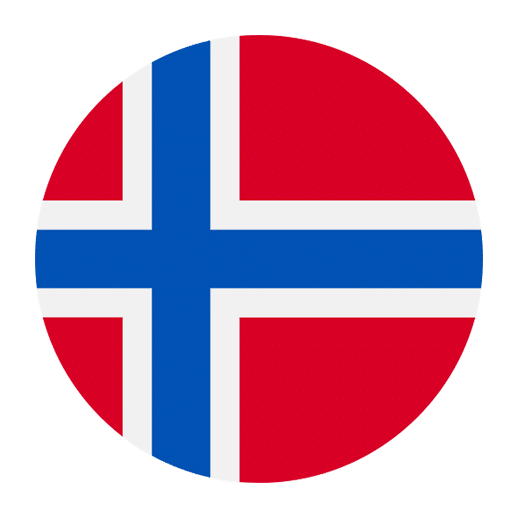Imagine yourself strolling through the charming streets of Oslo or Bergen, the crisp air filled with the scent of fresh pastries and sweets wafting from nearby bakeries. Norway, with its rich cultural heritage and stunning landscapes, also boasts a delightful array of desserts and confections that are deeply rooted in its traditions. For language learners, exploring the terminology of Norwegian desserts and sweets offers a delectable way to engage with the language and culture. This article will take you on a gastronomic journey through Norway’s most beloved desserts, offering key vocabulary and insights into their cultural significance.
Traditional Norwegian Desserts
Norwegian cuisine has a variety of traditional desserts that are often enjoyed during celebrations and holidays. Each dessert carries a piece of Norway’s history and culinary evolution. Understanding the terminology associated with these treats can provide a deeper appreciation of Norwegian culture.
Kransekake
One of the most iconic Norwegian desserts is the Kransekake, which translates to “wreath cake.” This towering confection is made from almond dough and is often shaped into concentric rings stacked in a pyramid. It is commonly served at weddings, Christmas, and other special occasions.
Key Vocabulary:
– **Kranse**: Wreath
– **Kake**: Cake
– **Mandler**: Almonds
Riskrem
Riskrem, or rice cream, is another beloved Norwegian dessert. It’s a creamy rice pudding often served with a sweet red sauce made from berries. This dessert is particularly popular during the Christmas season.
Key Vocabulary:
– **Ris**: Rice
– **Krem**: Cream
– **Saft**: Juice (often used for the berry sauce)
Tilslørte Bondepiker
This dessert, whose name translates to “veiled peasant girls,” is a layered treat made from apples, breadcrumbs, and whipped cream. The name is said to reflect the contrast between the simple ingredients and the elegant presentation.
Key Vocabulary:
– **Tilslørte**: Veiled
– **Bondepiker**: Peasant girls
– **Epler**: Apples
– **Brødsmuler**: Breadcrumbs
Sweets and Pastries
In addition to desserts, Norway has a variety of sweets and pastries that are enjoyed as everyday treats. These confections range from simple cookies to elaborate cakes, each with its own unique flavor and history.
Serinakaker
Serinakaker are traditional Norwegian butter cookies that are often enjoyed during the Christmas season. They are characterized by their crumbly texture and are usually topped with a sprinkle of sugar and chopped almonds.
Key Vocabulary:
– **Serina**: A name, often used in old Norwegian recipes
– **Kaker**: Cookies
– **Smør**: Butter
– **Sukker**: Sugar
Skolebrød
Skolebrød, or “school bread,” is a sweet pastry that is popular among children and adults alike. It consists of a soft, cardamom-flavored bun filled with vanilla custard and topped with icing and coconut flakes. This treat is often enjoyed as a snack or lunchbox item.
Key Vocabulary:
– **Skole**: School
– **Brød**: Bread
– **Kardemomme**: Cardamom
– **Vanilje**: Vanilla
– **Kokos**: Coconut
Bløtkake
Bløtkake, or “soft cake,” is a traditional Norwegian sponge cake that is typically layered with whipped cream and fresh berries. This cake is often served at birthdays, weddings, and other celebrations.
Key Vocabulary:
– **Bløt**: Soft
– **Kake**: Cake
– **Kremfløte**: Whipping cream
– **Bær**: Berries
Cultural Significance and Occasions
Understanding the cultural context in which these desserts and sweets are enjoyed can provide valuable insights into Norwegian traditions and social practices. Many of these confections are tied to specific holidays and celebrations, making them an integral part of Norwegian life.
Christmas
Christmas, or Jul, is a major holiday in Norway, and many traditional desserts are associated with this festive season. In addition to Riskrem and Serinakaker, other popular Christmas treats include pepperkaker (gingerbread cookies) and krumkaker (thin, rolled cookies).
Key Vocabulary:
– **Jul**: Christmas
– **Pepperkaker**: Gingerbread cookies
– **Krumkaker**: Rolled cookies
National Day
Norway’s National Day, celebrated on May 17th, is another occasion where traditional desserts play a central role. On this day, Norwegians enjoy various sweets and pastries, including Bløtkake and pølse med lompe (a type of sausage wrapped in a soft flatbread).
Key Vocabulary:
– **Nasjonaldag**: National Day
– **Pølse**: Sausage
– **Lompe**: Soft flatbread
Weddings and Special Occasions
Weddings and other special occasions often feature elaborate desserts like Kransekake and Bløtkake. These desserts are not only delicious but also serve as symbols of celebration and joy.
Key Vocabulary:
– **Bryllup**: Wedding
– **Spesiell anledning**: Special occasion
– **Feiring**: Celebration
Modern Twists on Traditional Sweets
While traditional desserts hold a special place in Norwegian culture, modern twists on these classics are also gaining popularity. Contemporary chefs and home bakers are experimenting with new ingredients and techniques to create innovative versions of beloved treats.
Vegan and Gluten-Free Options
As dietary preferences and restrictions become more common, many traditional Norwegian desserts are being adapted to be vegan and gluten-free. For instance, Kransekake can be made with gluten-free almond flour, and Riskrem can be prepared with plant-based milk and cream.
Key Vocabulary:
– **Vegan**: Vegan
– **Glutenfri**: Gluten-free
– **Mandelmel**: Almond flour
– **Plantebasert**: Plant-based
Fusion Desserts
Fusion desserts that combine traditional Norwegian flavors with international influences are also becoming popular. For example, a fusion dessert might combine the flavors of Skolebrød with elements of French pastry, creating a unique and delicious treat.
Key Vocabulary:
– **Fusjon**: Fusion
– **Internasjonal**: International
– **Smak**: Flavor
Learning Norwegian Through Desserts
Exploring the terminology of Norwegian desserts and sweets offers a fun and engaging way to learn the language. By familiarizing yourself with the names and ingredients of these treats, you can expand your vocabulary and gain a deeper understanding of Norwegian culture.
Practical Tips for Language Learners
1. **Visit Norwegian Bakeries and Cafés**: If you have the opportunity, visit a Norwegian bakery or café and practice ordering desserts and sweets in Norwegian. This will help you become more comfortable with the vocabulary and pronunciation.
2. **Try Cooking Norwegian Desserts**: Experiment with making traditional Norwegian desserts at home. Follow recipes in Norwegian and learn the terminology for ingredients and cooking techniques.
3. **Engage with Native Speakers**: Talk to native Norwegian speakers about their favorite desserts and sweets. This can provide valuable cultural insights and help you practice your conversational skills.
4. **Use Language Apps and Resources**: Utilize language learning apps and resources that focus on food and culinary vocabulary. This can help reinforce your understanding of the terminology.
Conclusion
Delving into the world of Norwegian desserts and sweets offers a delightful way to enhance your language learning journey. By exploring the rich variety of traditional and modern confections, you can expand your vocabulary, deepen your cultural understanding, and enjoy some delicious treats along the way. Whether you’re savoring a slice of Bløtkake at a celebration or trying your hand at baking Serinakaker at home, the sweet flavors of Norway provide a tasty and enriching path to language proficiency.

